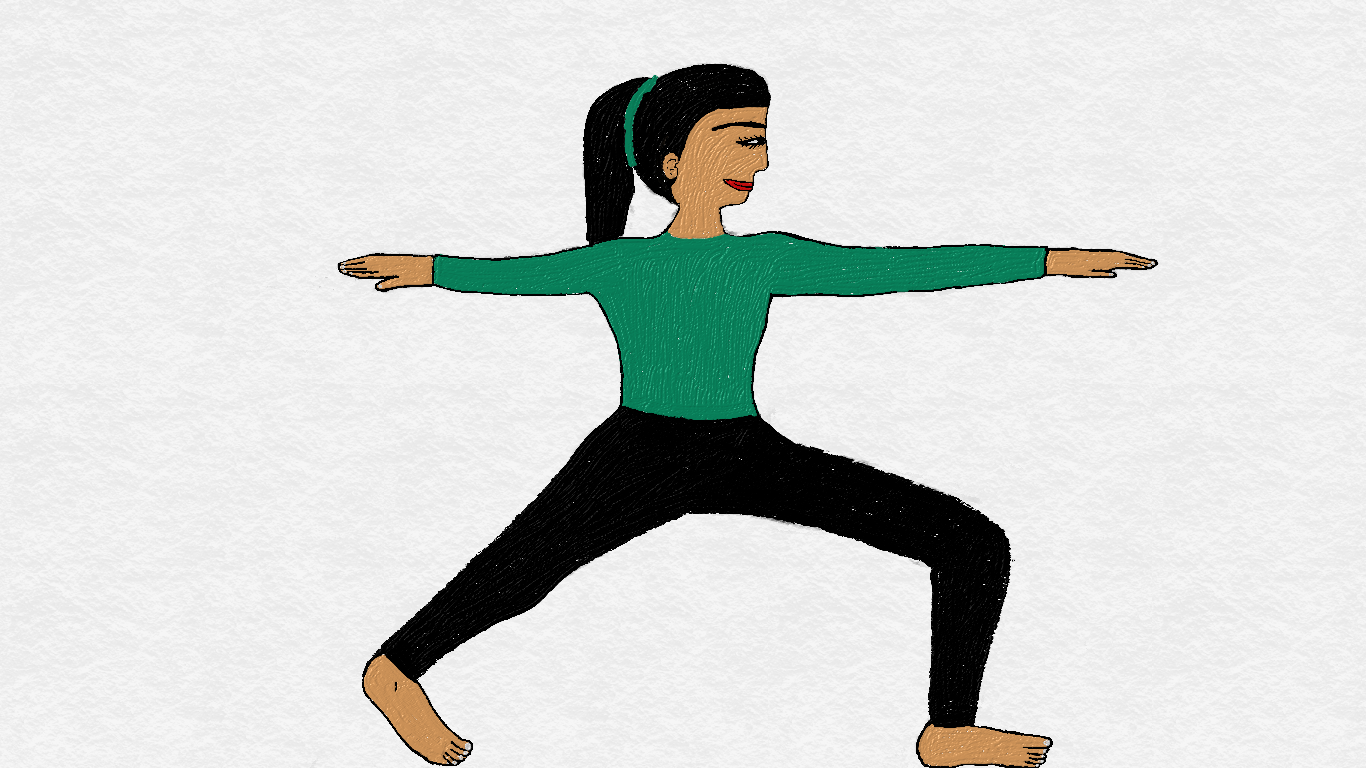|
In the vinyasa flow, a certain sequence of asanas are repeated cyclically as new asanas are introduced amidst the flow. These cyclical asanas in the vinyasa flow allow smooth transition, increased flexibility by warming up the muscles and permit optimal range of motion in the new asana introduced, as well as allow for resting and rejuvenation of the fatigued muscles when particular sequence asanas are held for a while. This hold period may vary and is best progressed through increase in the breath cycles it is held for.
Virbhadrasana 2 is an asana that is introduced amidst the Suryanamaskar B sequence. Initially, to learn this asana, see the steps below. Then as you become adept and the transition to this posture happens smoothly (without thinking), it may be incorporated within the sequence. Here are the details of this asana. • Begin by facing to one side on your yoga mat with a wide stride, such that both heels are in line. • Turn the left foot 90 degrees by pivoting the left foot outwards at the heel. This is done by rotating the left hip outwards. • Slightly turn the right hip inwards (TFL) and right forefoot/toes inwards, maintaining the heels in one line. • Slowly bend the left hip and knee (goal being 90 degrees) while lowering the torso toward the ground. The trunk continues facing the side. This recruits the left iliopsoas, hamstrings, and tibialis anterior as prime agonists. At the end alignment, a gentle co-contraction of the antagonists (gluteus maximus, quadriceps and gastroc-soleus) results in a stable hold of alignment. The hip abductors and adductors are in co-contraction for the knee to face forward without collapsing in either direction. • The weight is shifted on the right leg by grounding the heel, and outer edge of foot while the hip and knee are extended through gluteus maximus, quadriceps and hamstrings in co-contraction and tibialis anterior and posterior facilitating right foot inversion. • Right gluteus medius stabilizes the hip by balancing the right hip internal rotation moment of TFL and allowing effective weight transfer from trunk to lower extremity. • The arms are elevated at the shoulder with the left arm in front, above the left leg and right arm behind the torso, over the right leg. • It is important to keep the shoulder, elbow, and wrist at shoulder level with the hand and fingers extended to reach out. • The neck is rotated to the left and the gaze is fixed directly on the left thumb. Cervical rotators such as the longissimus capitus, splenius capitus and cervicus and sternocleidomastoid facilitate this movement. • Elongate the spine as the arms are elevated at shoulders with scapula stabilized by serratus anterior into the chest wall and slightly pulled down (lower trapezius). To come out of the asana, lower the arms to the sides and straighten the left knee before going into high plank pose.
0 Comments
Your comment will be posted after it is approved.
Leave a Reply. |
Details
AuthorAmi Gandhi is a licensed physical therapist in the state of California. She is the owner of StableMovement Physical Therapy, a small boutique practice in San Jose that offers patient centered, one-on-one, hands-on physical therapy. Archives
March 2018
Categories |
